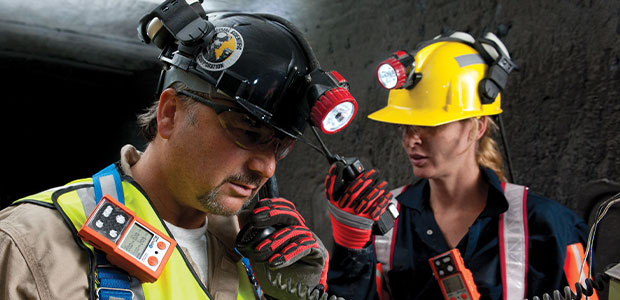
How to Streamline Gas Detector Maintenance
Maintenance is crucial to ensure that the devices are working as expected when workers pick them up at the beginning of each shift.
- By Aashima Dhankhar
- Dec 01, 2021
Overseeing a gas detection fleet comes with many important responsibilities. Your workers depend on you to keep operations running smoothly with minimal device downtime, and most importantly, to give them the tools they need to protect themselves from potential hazards on the job. One task on your to-do list is to maintain your gas monitors. Maintenance is crucial to ensure that the devices are working as expected when workers pick them up at the beginning of each shift. However, when gas detectors outwardly appear to be functioning and time is limited, it can be easy for maintenance to fall behind other responsibilities.
Why You Must Make Maintenance a Priority
Daily bump tests and monthly calibrations are the only way to know that your gas monitor will provide accurate gas readings and attention-grabbing alarms. Sensors can drift over time and be suddenly affected by poisons and inhibitors, leading to inaccurate readings, which makes monthly calibration a critical part of your gas detection maintenance plan. Daily bump testing ensures that sensors will respond to gas hazards and trigger the appropriate audio and visual alarms.
Routine maintenance helps you get the most out of your investment into your safety program. If you do not keep up with routine maintenance on your gas monitors, you are creating cracks in your program.
What is the cost of not maintaining your gas monitors? To start, the life of the gas detector can decrease if you do not update firmware, track sensor function, calibrate, bump test and charge monitors regularly. An unmaintained gas monitor will inevitably give up, and you can’t predict the timing. An unmaintained monitor could fail at any time, posing a potentially fatal threat to your workers if gas hazards are present. When working in a hazardous environment, everyone must do their job, including your gas detectors.
While this routine maintenance is not particularly difficult or time-consuming, it can be a challenge to dedicate the time in your busy schedule to complete it. There are several solutions for your repeated maintenance frustrations, from the smallest fleet to the largest. They range from more intentional manual maintenance to full-service solutions.
Make Time for Maintenance
If you and your workers have more time to dedicate to manual maintenance, setting aside a consistent time to bump test and calibrate can help build a stronger routine and culture around keeping gas monitors up to date. Mandatory maintenance windows ensure that you can count on your gas monitors to alert workers when they need them.
However, when you do maintenance and repairs in-house, you must stock a larger inventory of common parts to avoid lengthy delays. At the same time, you cannot plan for the unpredictable—anticipating what parts you might need for replacements and repairs is nearly impossible. To avoid downtime when gas detectors fail, you also need to keep spares available.
Automate Your Routine
Docking stations can provide the convenience of automating routine maintenance and a way to track your gas detectors’ statuses digitally. Workers simply dock their monitors when not in use and the stations keep them up to date with bump tests and calibrations. Some docking stations have built-in systems that show you when devices are overdue for bump testing or calibration so that you can easily track and enforce compliance.
Automation reduces the opportunity for human error to become an obstacle to safety—docking stations don’t rely on workers to manually identify issues. This allows you to manage your gas monitor fleet accurately and efficiently.
Turn to a Trusted Expert for Repairs
Even if you do have staff dedicated to gas detector maintenance, identifying and repairing issues with such complex technology requires a high level of expertise and training. Staff who are responsible for repairs often have other responsibilities and might not be available immediately if issues arise. Third-party maintenance providers can sometimes fix your gas monitors, too, but speed is an obstacle because they cannot always prioritize your devices. Because of this, downtime can halt or slow operations in the field while you wait for someone to fix your gas monitors or send you parts. Most companies cannot afford this downtime and lost productivity.
With a gas detection maintenance service through your manufacturer, you can eliminate the time spent diagnosing problems, ordering parts and keeping your gas detectors compliant. This can save you money and free up staff to work on other projects.
Adding a manufacturer’s maintenance service to your gas detection program means you can use your docking stations to track your fleet and catch declining performance before it puts your workers in danger. The docking station automatically orders replacement monitors when needed, and you receive a new monitor within days. All you need to do is send back your failing gas monitor to be repaired by experts. The pain of ordering new supplies can be automated, saving you hours of paperwork and processing costs.
When it comes to maintenance, the less you have to worry about the better. A maintenance and repair subscription program can free you and your workers to focus on what you know best without worrying about gas detector maintenance.
This article originally appeared in the November/December 2021 issue of Occupational Health & Safety.